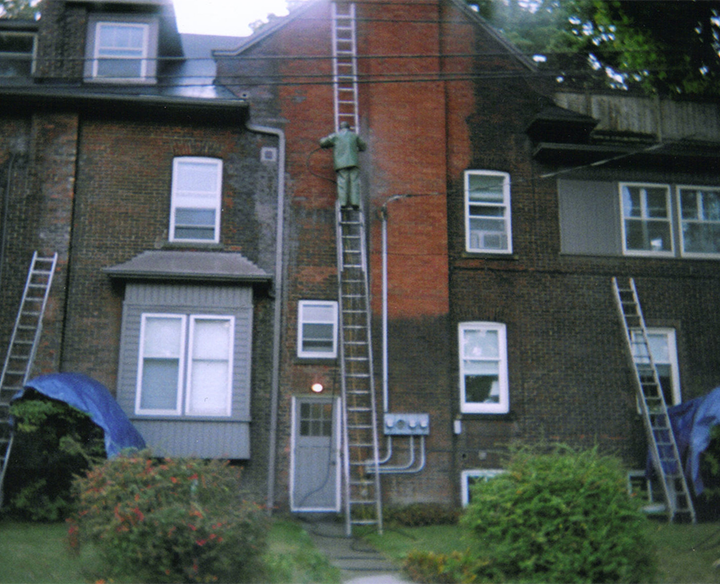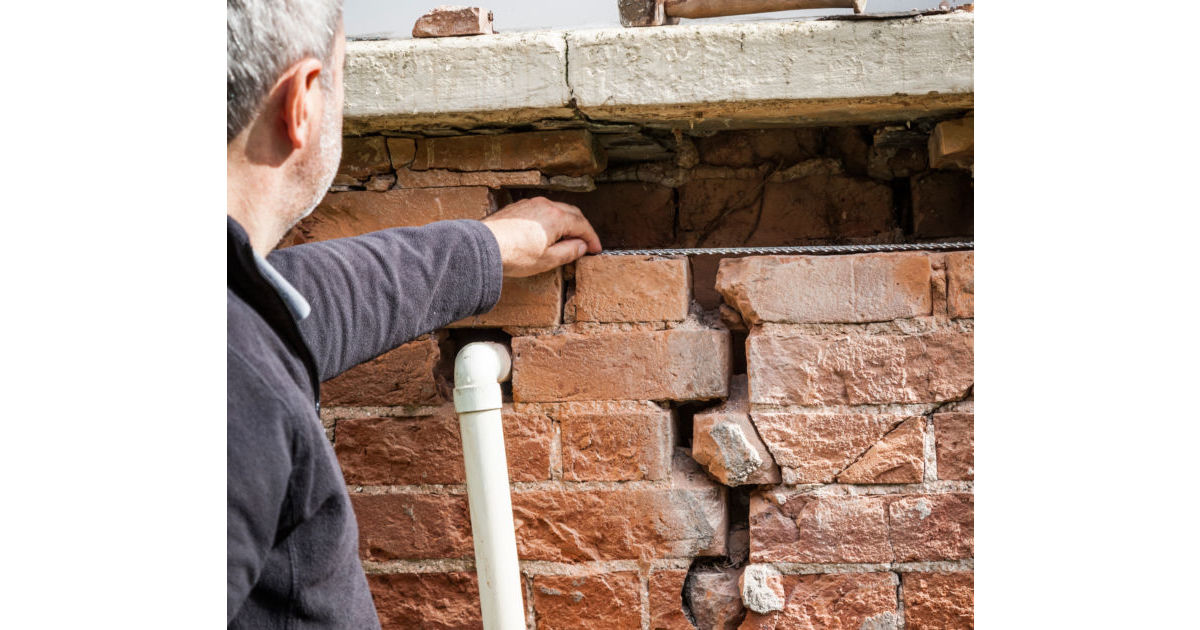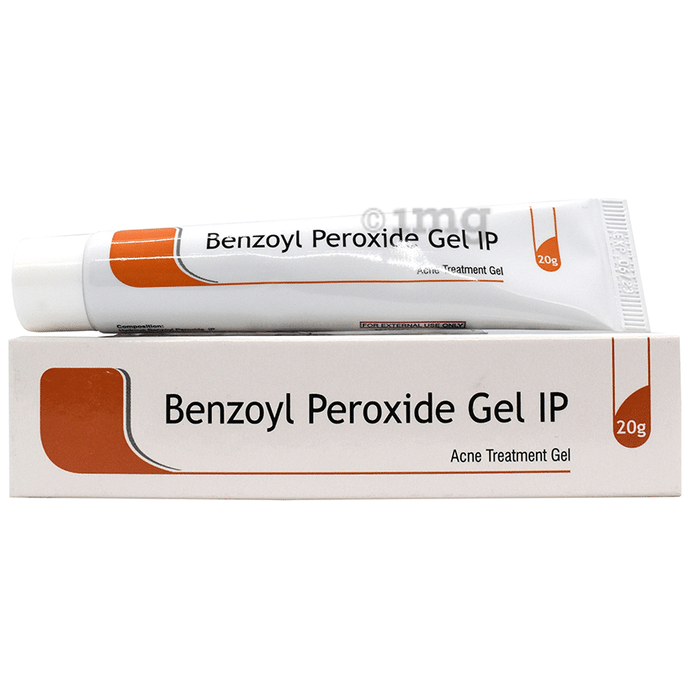Benzoyl peroxide is often recognized as a staple in acne treatments, but did you know it serves an essential role in construction and brick repair? Its unique chemical properties make it an effective hardening agent in various repair mixes. If you're thinking about tackling that crumbling brickwork on your property, understanding how to knead benzoyl peroxide into your repair mix can be your game-changer. Let’s dive into what makes this compound special and why it’s an excellent choice for your brick repair project.
Understanding the Properties of Benzoyl Peroxide

Benzoyl peroxide (C14H10O4) is a white crystalline compound primarily known for its effectiveness as a bleaching agent and its antimicrobial properties. But what does this mean for brick repair? Here’s why it’s beneficial:
- Oxidizing Agent: Benzoyl peroxide acts as an oxidizing agent, which means it can initiate chemical reactions that lead to hardening when mixed with other compounds.
- Versatile Use: Due to its ability to work with various substrates, it can be used for more than just bricks; it also bonds well with concrete and mortar.
- Improves Adhesion: When kneaded into repair mixtures, it enhances adhesion, ensuring that your repairs last longer and resist cracking.
- Quick Drying: One of the most appealing features is its quick drying time, allowing for fast repairs and less downtime on your project.
To give you a clearer idea, here's a quick comparison of benzoyl peroxide versus traditional repair materials:
| Property | Benzoyl Peroxide | Traditional Repair Materials |
|---|---|---|
| Drying Time | Fast | Moderate |
| Adhesion | Strong | Variable |
| Flexibility | Moderate | Often low |
In summary, the properties of benzoyl peroxide not only make it suitable for aesthetic enhancements but also provide structural integrity, making it a top choice for brick repair. Its versatility, adhesion, and quick-drying nature can be both a time-saver and a quality enhancer in your DIY projects.
Tools and Materials Required for the Repair

Before diving into the actual repair process, it’s vital to gather all the necessary tools and materials. Having everything you need at arm's reach will make your project smoother and more enjoyable. Here’s a handy list of what you’ll need:
- Safety Gear:
- Gloves – To protect your hands.
- Safety goggles – To shield your eyes from any splashes.
- Mask – To avoid inhaling any dust or chemical particles.
- Repair Materials:
- Benzoyl peroxide – The star of the show!
- Brick dust or crushed brick – For that authentic texture.
- Water – To mix and achieve the right consistency.
- Tools:
- Mixing container – A bowl or bucket to combine your materials.
- Stirring stick – A simple wooden stick or a spatula will work just fine.
- Putty knife – For applying the mixture to the brick.
- Paintbrush – To help smooth out the surface.
With this list in hand, you're almost ready to get started! Ensure your workspace is clean and organized before you begin mixing your materials. It helps reduce the mess and makes the entire process much easier.
Step-by-Step Guide to Kneading Benzoyl Peroxide

Kneading benzoyl peroxide is crucial for creating an effective repair mixture that can bond well with the brick material. But don’t worry; it’s pretty straightforward. Here’s a step-by-step guide to help you through the process:
- Prepare Your Workspace:
Start by cleaning your workspace. Remove any debris or dust from your area to prevent contamination. Lay down some plastic sheets if you want to keep things extra tidy.
- Combine Ingredients:
In your mixing container, add the required amount of benzoyl peroxide. Then, gradually mix in the brick dust or crushed brick, adding a little at a time.
- Add Water:
Next, slowly incorporate water into the mixture. The amount will vary based on your needs; aim for a consistency that is thick but workable—think of it like pancake batter.
- Knead the Mixture:
Using your hands (make sure to wear gloves!), knead the mixture thoroughly. This process helps to ensure that all ingredients blend well together, ensuring the best bond with the brick.
- Check Consistency:
After kneading, check the consistency. If it appears too dry, add a bit more water. If it’s too wet, sprinkle in some more brick dust to thicken it up.
- Ready for Application:
Once you have the right consistency, your mixture is ready for application. Scoop small amounts with your putty knife and apply it directly to the damaged areas of your brick.
And there you have it! Kneading benzoyl peroxide doesn’t have to be complicated. Just follow these steps, and you’ll be well on your way to restoring your bricks to their former glory.
Applying the Mixture to Brick Surfaces

Now that you’ve prepared your benzoyl peroxide mixture for brick repair, it’s time to apply it effectively. This step can greatly influence the overall success of your repair, so let's talk about the best practices.
First, make sure your brick surfaces are clean and free of dirt or moisture. A good cleaning can be achieved using a stiff brush or a pressure washer. Here are a few steps to follow during application:
- Equipment: Use a trowel or putty knife for spreading the mixture evenly over the brick surface.
- Gentle Pressure: Apply the mixture with gentle pressure to ensure it adheres well. You don’t want it to run off or create a mess.
- Uniform Coat: Try to create a uniform coat across the damaged areas. If you’re filling in cracks, ensure they're fully packed to prevent air pockets.
- Curing Time: After applying, allow the mixture to cure as per the product instructions, usually this can take anywhere from a few hours to a whole day.
Keep in mind that this is a repair process, so your main goal is to ensure durability and longevity. A consistent application will not only enhance strength but also improve the aesthetic appearance of the bricks.
Tips for Achieving the Best Results
When it comes to using benzoyl peroxide for brick repair, a few extra tips can help you achieve top-notch results. Let's explore:
- Select Quality Products: Make sure you choose high-quality benzoyl peroxide brands that are formulated explicitly for exterior use.
- Take Your Time: Don’t rush the application process. Patience will pay off in durability.
- Weather Conditions: Aim to perform repairs on a dry, moderate temperature day. Extreme weather can affect drying and adhesion.
- Follow Instructions: Always read and follow the manufacturer's guidelines regarding mixing and application. Ignoring these can lead to ineffective repairs.
- Test First: If you're a beginner, it might be wise to test on a small, inconspicuous area first. This will give you a feel for the product without risking a large visible area.
Lastly, don’t forget to wear appropriate safety gear like gloves and a mask. Taking these precautions will not only make the process safer but also much more enjoyable!
7. Common Mistakes to Avoid
Kneading benzoyl peroxide for brick repair can seem straightforward, but there are a few common pitfalls that many DIY enthusiasts stumble into. Let’s break down these mistakes so you can avoid them and ensure your brick repair project is a success!
- Not Using the Right Ratio: One common error is not following the recommended mixing ratio of benzoyl peroxide and catalyst. Always measure your components accurately to maintain optimal effectiveness.
- Over-Kneading: While thorough mixing is crucial, it’s important not to over-knead the mixture. This can lead to a product that is too soft and less effective at bonding.
- Skipping Safety Gear: Safety first! Neglecting to wear gloves, goggles, and a mask can expose you to harmful fumes and irritants. Always protect yourself when working with chemicals.
- Ignoring Environmental Conditions: Applying benzoyl peroxide in unsuitable weather can lead to poor results. Avoid working in extreme temperatures or high humidity, as this can affect Set Times and adhesion.
- Using Old Ingredients: Check the expiration dates on your benzoyl peroxide and catalyst. Using outdated materials can compromise the effectiveness of your repair.
By keeping these mistakes in mind, you'll set yourself up for success and achieve a solid, lasting repair on your bricks!
8. Additional Resources and YouTube Tutorials
If you're looking to enhance your knowledge and skills when it comes to kneading benzoyl peroxide for brick repair, several resources are available that can help you. Whether you prefer written guides or visual demonstrations, you have options!
Written Guides:
YouTube Tutorials:
| Video Title | Channel | Link |
|---|---|---|
| Kneading Tips for Benzoyl Peroxide | DIY Repair Guru | Watch Here |
| Brick Repair Techniques Explained | Brick & Mortar Masters | Watch Here |
| Common Brick Repair Mistakes | The Handy Person | Watch Here |
Diving into these resources can provide you with valuable insights, tips, and tricks that will make your brick repair project a breeze. Happy repairing!
How to Knead Benzoyl Peroxide for Brick Repair
Benzoyl peroxide is a powerful chemical compound that is widely used in various applications, including brick repair. Its properties allow it to effectively bond materials together, making it ideal for mending bricks that have suffered cracks or damage. Kneading benzoyl peroxide correctly is essential for achieving the best results in your repair work. Here’s how to do it.
Materials Needed
- Benzoyl peroxide compound
- Mixing container
- Protective gloves
- Masking tape
- Putty knife
- Brick repair surface
Steps to Knead Benzoyl Peroxide
- Preparation: Ensure your work area is clean and free from debris. Put on your protective gloves.
- Measure the Amount: Pour an appropriate amount of benzoyl peroxide into the mixing container. The quantity will depend on the size of the brick damage.
- Mixing: Use a putty knife to start kneading the benzoyl peroxide. Make sure to fold it over and press it down repeatedly to combine the components uniformly.
- Check for Consistency: The mixture should have a smooth, paste-like consistency. If it feels clumpy or uneven, keep kneading.
- Application: Once kneaded, apply the mixture directly to the damaged areas on the brick using the putty knife.
- Setting: Allow the benzoyl peroxide to cure as per the manufacturer’s instructions. This usually takes a few hours.
Final Thoughts
Kneading benzoyl peroxide for brick repair is a straightforward process that, when done correctly, can ensure durable and effective repairs. Always follow safety precautions, and with careful application, your bricks can regain their strength and aesthetic appeal.










